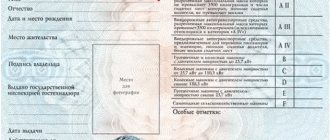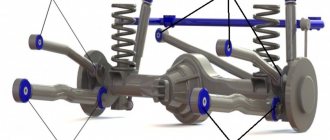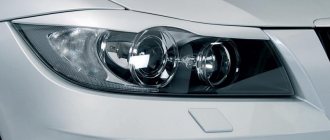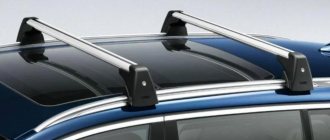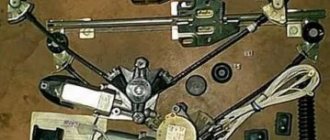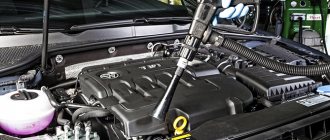The category that is open on a driver’s license (DL) designates the type of vehicle (VV) that the holder of the DL has the right to drive. At the same time, driving a vehicle that is not included in this category is equated to the concept of driving without a license. If such a situation arises, the driver will have to pay a fine, the amount of which is in the range of 5,000-15,000 rubles.
In today's material we will look in detail at why category D is needed, what vehicles (TS) can be driven with this category and how to unlock it.
Which vehicle requires category “D”
Group “D” transport includes:
- buses intended for passenger transportation, which are equipped with seats for this purpose (quantity - more than 8 pieces);
- Vehicles of this category that have a trailer weighing no more than 750 kg. A category “D” driving license gives the driver permission to drive buses of any type that are designed to carry 8 or more passengers, as well as to install a trailer on such a bus, the maximum weight of which is 750 kg.
Possible subcategories:
- subcategory "D1" includes small buses that have 9 to 16 seats for passengers, as well as those equipped with a light trailer (weight no higher than 750 kg). To drive the specified vehicle, you will need to have a driving license with an open category “D1”;
- subcategory “DE” includes buses with a heavy trailer (weight exceeds 750 kg), as well as articulated buses, which consist of two passenger compartments connected to each other by an accordion. Driving this combination of vehicles requires the driver to have a category “DE” license;
- subcategory “D1E” includes small buses that have from 9 to 16 seats for passengers, which are equipped with a heavy trailer at the back, and the weight of such a vehicle together with the trailer is within 12 tons. In this case, the emphasis is placed on the fact that the specified trailer cannot be used to transport passengers, and the total weight of the train does not exceed 12 tons.
Features of a driver's license with open category “D”:
- drivers with an open category “DE” license can drive vehicles falling under the “D1E” category;
- Holders of a driving license under category D can drive vehicles that belong to category “D1”.
Additional subcategories
If you have category D, you have access to the following subcategories:
| Subcategory type | Vehicle characteristics |
| D1 | A low-capacity bus with 9-16 seats for passengers and vehicles with a trailer up to 750 kg. |
| DE | The bus is an “accordion” for transporting passengers and vehicles with a trailer weighing no more than 750 kg. |
| D1E | Number of seats on the bus: no more than 16, presence of a large trailer. Total vehicle weight: up to 12 tons. |
The main feature of the listed subcategories is the ability to drive a bus with up to 16 passenger seats.
How and where to get category “D”
If you need to get a category that allows you to drive a bus, you will have to spend a lot of effort and time, since you will need to attend a driving school for 2 months, thoroughly study the traffic rules, and also learn the techniques of driving a bus.
In short, to obtain a driving license with an open category “D”, the following conditions must be met:
- have rights with open categories C or B;
- have at least 3 years of driving experience;
- pay for driving school tuition;
- have a medical book.
If we consider the entire procedure in more detail, then to obtain category “D” the driver needs to act in stages.
Stage No. 1. Driving school training
Obtaining category “D” by a driver will require him to have documents that will confirm that he has at least three years of driving experience. Such documents are rights (category B), registration certificates, protocols, etc.
Training at a driving school costs 30,000-40,000 rubles and will take 2.5 months, after which you will need to pass an exam. To prepare well for this exam, you should attend 24 theoretical classes and 14 driving lessons (practical classes) at a driving school.
It should be noted that most driving schools provide LAZ buses for driving lessons.
Practical training is very important, since driving a bus is a much more complex process than driving a regular car. There are some nuances here that the instructors will teach you.
Stage No. 2. Exam
When you complete your driving school course (theoretical and practical classes), you will need to take an exam.
Please note that before taking the examination tests, you will need to provide a passport and medical record. Without these documents, you simply will not be allowed to take the exam.
Please note that upon receiving category “D”, you have the right to take the exam for category “C” in parallel. It is worth taking advantage of this opportunity, because this category of rights will not be superfluous.
Stage No. 3. Getting a category
After passing the exam (successfully), you need to come to the driving school with your old license, take a photo and get a license with category “D”.
Examinations are accepted and a driving license is issued at the examination departments of the State Traffic Safety Inspectorate within the constituent entity of the Russian Federation in which the potential driver is registered (registered) at his place of residence, place of temporary residence or stay.
At the request of a person who wants to receive category “D”, the examination and subsequent issuance of a driving license of the required category can be carried out in the examination department at the location of the educational organization (driving school) where the driver was trained.
Features of training
What are the requirements for drivers who want to have category “D”?
The list of criteria is as follows:
- categories “C” and “B” must already be open, or at least one of them.
- this category has an age limit - the driver’s age is more than 21 years (the exception is people doing military service on a contract or urgent basis, their age limit is 19 years).
- To open this category, you must provide both a medical certificate and a valid medical record.
- Driving experience must be more than 3 years.
In order to undergo training for this category at a driving school, you must provide the following documents:
- valid driver's license;
- photographs 35x45 mm in the amount of two pieces, they are needed only for paperwork at a driving school, they will not be useful for obtaining a license;
- passport or any other identification document;
- certificate from a medical institution about your health status.
Not all driving schools have the right to teach category “D”. But if a driving school has such an opportunity, then it adheres to the following plans:
- Express training. For those who have previously had experience driving a bus, and the goal of training is to open a subcategory. The program consists of 192 hours of theory and 10 hours of practice to consolidate skills and prepare for the exam.
- Standard course. Have a little driving skill. The program also includes 192 hours of theory and 40 hours of practice.
- Full course. This course is intended for those who will drive a bus for the first time. Training from "0". The program consists of 192 hours of theory and 100 hours of practice.
If a driver wants to retrain from category “C” to “D”, then the number of hours is about 114.
Of course, this is an approximate course. Each driving school, guided by regulations, sets its own rules. But everyone has the same goal - successful training and subsequent passing of the exam.
At what age can you get category “D”
Persons who have reached the age of 21 are allowed to drive vehicles falling under categories “D” and “D1”.
Driving vehicles falling under category “DE” is permitted to persons who have the right to drive vehicles of category “D” for a period of at least 1 year.
Combinations of vehicles falling under the subcategory “D1E” have the right to drive those drivers who have the right to drive a vehicle of category “D” or subcategory “D1” for a period of at least 1 year.
Persons in military service who have undergone appropriate training in accordance with the professional driver training program of category “D” and subcategory “D1” may be allowed to take the exam when they reach the age of 20.
Until such persons reach the age of 21, the issued driver's licenses allow them to drive a vehicle falling under category "D" or subcategory "D1", which belong exclusively to the Armed Forces of the Russian Federation and other military formations, as well as bodies providing for military training in them. services.
Cost of opening category D
The price of training in driving schools is not fixed, varies between 30-40 thousand rubles and depends on the location of the organization. Before completing the training, experts recommend that you first familiarize yourself with the prices and choose the best option for yourself.
Each organization establishes its own payment procedure: paying the full cost or using installments. Duration of training: 2.5 months.
High-quality preparation for examination tests requires attending 24 theory lessons and 14 practical lessons. To practice driving skills, most driving schools provide LAZ buses.
Video about categories of rights
If a driver drives a car without the required category, such a situation is equivalent to driving without a license, which threatens with a fine of 5-15 thousand rubles. In this case, the vehicle is confiscated and sent to the impound lot.
What exams do you need to take for category D?
Exams for category “D” can only be taken after completing the appropriate training.
This training is carried out in 2 stages and includes theoretical and practical parts.
The theoretical part consists of classes in a driving school, where, under the guidance of a teacher, traffic rules, the design of vehicles of category “D”, the basic rules for passenger transportation, the basics of safe bus driving, as well as the basics of first aid and conflict resolution are studied.
Practical classes are aimed at learning to drive and in the first stages are conducted at a race track with a driving school instructor. During such classes, future drivers acquire knowledge and practice driving away on an incline, making turns, entering a box, etc. At the second stage, future drivers learn to drive on the roads.
Category "D": exam stages
The exam to obtain category “D” is carried out in 2 stages and consists of a theoretical and practical exam on driving a vehicle on a race track.
1. Theoretical exam – tickets for the exam for category “D” are the same as tickets for categories B-C. So you can simultaneously take the theoretical part to obtain categories C and D.
2. Driving (practical part on the race track) – here the driver must complete one of the following tasks (at the examiner’s choice):
Option #1
- start and then stop on an incline;
- parking (parallel), performed in reverse;
- "snake".
Option No. 2
- start and then stop on an incline;
- parking (parallel), performed in reverse;
- reversal
Option #3
- start and then stop on an incline;
- entry to the box;
- "snake".
The final stage of the practical part of the exam is driving in the city.
In conclusion, I would like to note that there are no fundamental differences in passing the exam for category “D” in comparison with the exam for category “B”. However, it is very important to acquire the skills to adequately drive a bus, since driving such a vehicle is much more difficult than driving a regular passenger car.
Last update: 04-09-2020
Procedure for obtaining category D licenses
Formally, the process of obtaining rights is the same for all categories.
After completing the training, you must submit a package of documents to take the exam at the traffic police. If this follows immediately after graduating from a driving school, the process takes place centrally, with training organizations providing assistance in formal procedures.
Documents for obtaining category D
You need to submit an application to the traffic police with the following attached:
- a document confirming your personal data (passport);
- certificates of good health;
- driving school certificate;
- document confirming payment of state duty (if it is paid in advance).
Exam in the traffic police
Studying at a driving school itself does not give cadets the right to drive. Your skills and knowledge must be confirmed by the traffic police through an exam, which, like the internal one, includes theoretical and practical parts. Practice includes exercises on the racetrack and driving in the city.
For cadets, starting in 2021, there is a wonderful opportunity to qualify as the first two knowledge test exams conducted by a driving school, subject to certain conditions:
- During the internal exam, a traffic police examiner is present;
- knowledge is tested using a special automated program;
- The cadets take practical exercises on a racing track and on a bus, which meet the requirements established by law.
The driving skills test must be held at a race track that meets legal requirements.
During the theory test, future drivers must answer 20 questions in 4 blocks. 20 minutes are allotted for answers. No more than two errors are allowed. However, in some controversial situations, additional questions are proposed. For example, if the examinee does not answer 1 question correctly, he is asked to answer 5 more questions. For a positive result, you need to give correct answers to all of them.
Knowledge testing takes place in a specially equipped classroom using an approved automated program
The traffic police directly only checks the ability to drive a bus in the city.
How is the driving test carried out?
At the race track, the cadet is expected to perform the following exercises:
- movements and stops on the overpass;
- entering and leaving the “garage”;
- diagonal parking;
- stops to disembark or pick up people;
- movement in a limited area (“snake”, turn, turn).
The future driver has no more than two minutes to complete one element. The sequence is determined by the traffic police inspector on site. Most often, the examinee must complete all 5 elements in sequence. Less often, a return from the place where the exercise is performed to the starting point is required.
The “boxing drive” exercise can be performed simply in a marked area
The principles for assessing exercise performance have undergone some changes in 2021. The system for calculating penalty points at the race track is a thing of the past. Today there is a rule for the number of permissible errors, which are divided into gross, minor and not too serious.
For example, the following are considered a gross error:
- refusal of a given direction;
- crossing a marking line or a conditional line marked with chips;
- crossing the stop line;
- not crossing a certain lane if crossing it is provided for by the exercise;
- moving backward if this is not allowed in the element;
- exceeding the time required to complete a task;
- moving backwards when performing the flyover exercise by more than 30 cm;
- refusal to complete a task.
One of the listed actions is sufficient for a negative test result.
2 or less minor errors are allowed. A cadet is considered to have committed a minor violation if:
- hit the marking line;
- turned off the engine.
If the future driver successfully passes the test, the traffic police officer makes a decision on his admission to the last stage of the test - driving around the city.
Driving takes place along routes approved by the State Traffic Safety Inspectorate. The driver, while driving the bus, must follow the instructions of the inspector. No more than 30 minutes are allotted per examinee, but in practice the examiner needs much less time to determine the grade.
Unlike the speedway, the city still has a penalty point system. You can get the coveted “pass” by scoring no more than 5 points. For a gross error, 5 points are awarded immediately. The average will add 3 points, therefore, 1 error is allowed. Minor mistakes have a “weight” of 1 point, which means that the candidate has the right to make no more than four of them.
An inspector fills out an exam sheet during a driving test.
It is not for nothing that driving around the city is the final test, because it is at this stage that the candidate can maximally demonstrate his readiness or unpreparedness for real driving a bus in the city. The inspector evaluates a set of criteria:
- knowledge of traffic rules;
- management skills;
- logical thinking and the ability to assess circumstances and make the right, adequate decision;
- emotional state of the future driver in real traffic conditions.
The amount of the state fee for obtaining a driver's license
The issuance of a driver's license with category D is an administrative procedure subject to payment of a state fee.
In accordance with the Tax Code, you need to pay 2 thousand rubles for a regular plastic license, and 3 thousand rubles for a new generation document.
When paying the fee through the Gosuslugi portal by non-cash method there is a 30% discount. It applies only to individuals registered in the system. In this option you will need to pay only 1400 rubles.
Learning process
As soon as the choice is made, you should go to the driving school, taking all the documents with you.
Each driving school has its own approach, the training process usually takes from 2 to 3 months. During this time it is necessary to complete a theoretical and practical course. Most driving schools choose a LAZ vehicle for practical lessons. Exercises should be taken seriously. Driving a bus is not an easy task, even for experienced drivers without specific bus driving skills. After the course of study, the student faces an exam.
Before taking the exam, you will need to present your passport and medical record.
The final exam is not much different from passing the exam for category “B”. It consists of several parts:
- theory – taking tests using a computer;
- exercises on the race track, on a special site;
- practice – driving around the city.
Since the maneuverability of the LAZ is very low, the last part of the exam will be very difficult. Separately, you need to dwell on theoretical classes. They include:
- basics of vehicle driving safety;
- Traffic Laws;
- rules for providing first aid to victims in the event of an emergency.
If everything goes well, then you need to take your old license and take it to the driving school. There they will take a photograph and issue a new license, which will indicate category “D”.
